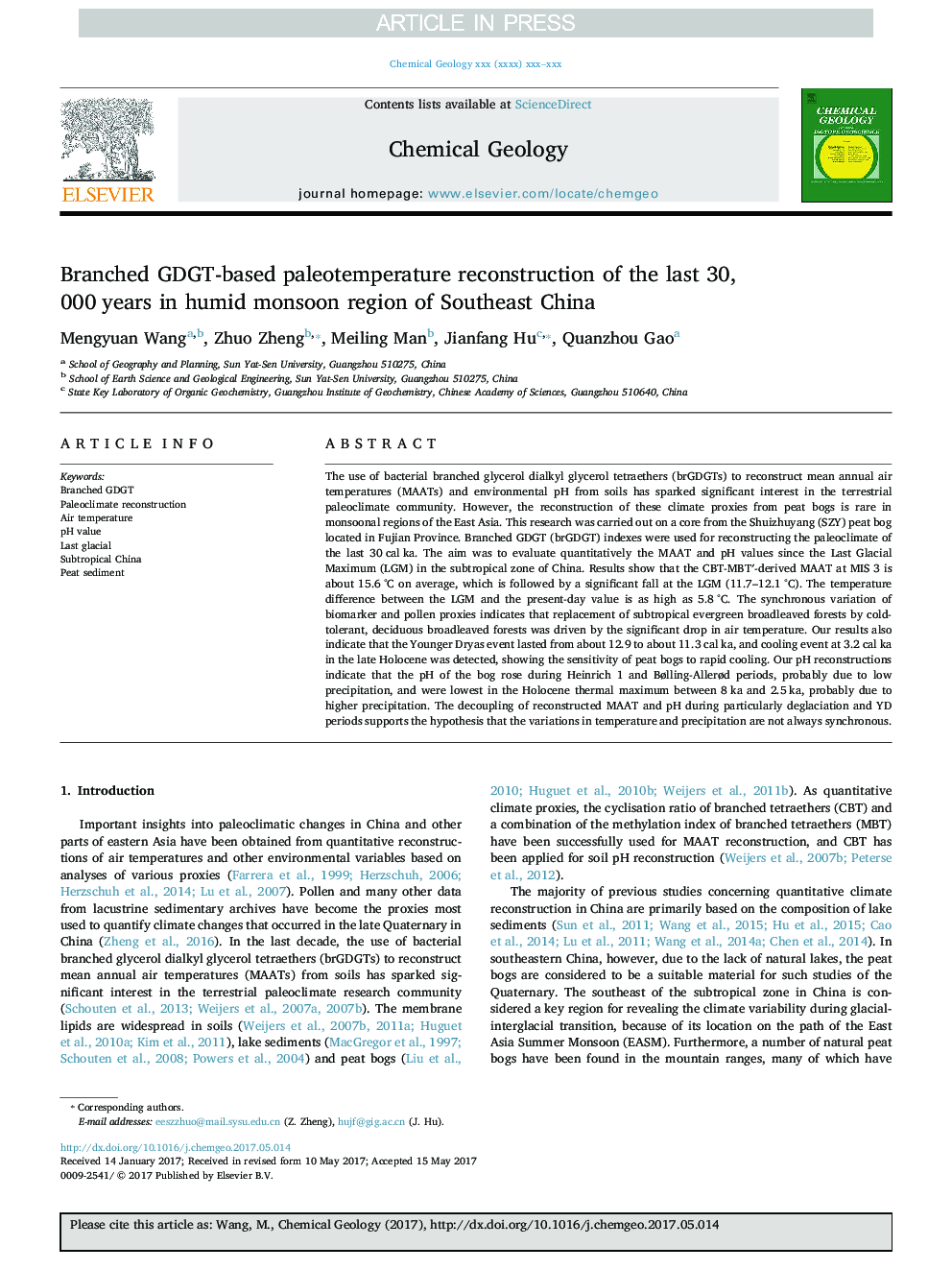| کد مقاله | کد نشریه | سال انتشار | مقاله انگلیسی | نسخه تمام متن |
|---|---|---|---|---|
| 5782617 | 1637511 | 2017 | 9 صفحه PDF | دانلود رایگان |
عنوان انگلیسی مقاله ISI
Branched GDGT-based paleotemperature reconstruction of the last 30,000Â years in humid monsoon region of Southeast China
دانلود مقاله + سفارش ترجمه
دانلود مقاله ISI انگلیسی
رایگان برای ایرانیان
کلمات کلیدی
موضوعات مرتبط
مهندسی و علوم پایه
علوم زمین و سیارات
ژئوشیمی و پترولوژی
پیش نمایش صفحه اول مقاله

چکیده انگلیسی
The use of bacterial branched glycerol dialkyl glycerol tetraethers (brGDGTs) to reconstruct mean annual air temperatures (MAATs) and environmental pH from soils has sparked significant interest in the terrestrial paleoclimate community. However, the reconstruction of these climate proxies from peat bogs is rare in monsoonal regions of the East Asia. This research was carried out on a core from the Shuizhuyang (SZY) peat bog located in Fujian Province. Branched GDGT (brGDGT) indexes were used for reconstructing the paleoclimate of the last 30 cal ka. The aim was to evaluate quantitatively the MAAT and pH values since the Last Glacial Maximum (LGM) in the subtropical zone of China. Results show that the CBT-MBTâ²-derived MAAT at MIS 3 is about 15.6 °C on average, which is followed by a significant fall at the LGM (11.7-12.1 °C). The temperature difference between the LGM and the present-day value is as high as 5.8 °C. The synchronous variation of biomarker and pollen proxies indicates that replacement of subtropical evergreen broadleaved forests by cold-tolerant, deciduous broadleaved forests was driven by the significant drop in air temperature. Our results also indicate that the Younger Dryas event lasted from about 12.9 to about 11.3 cal ka, and cooling event at 3.2 cal ka in the late Holocene was detected, showing the sensitivity of peat bogs to rapid cooling. Our pH reconstructions indicate that the pH of the bog rose during Heinrich 1 and Bølling-Allerød periods, probably due to low precipitation, and were lowest in the Holocene thermal maximum between 8 ka and 2.5 ka, probably due to higher precipitation. The decoupling of reconstructed MAAT and pH during particularly deglaciation and YD periods supports the hypothesis that the variations in temperature and precipitation are not always synchronous.
ناشر
Database: Elsevier - ScienceDirect (ساینس دایرکت)
Journal: Chemical Geology - Volume 463, 5 July 2017, Pages 94-102
Journal: Chemical Geology - Volume 463, 5 July 2017, Pages 94-102
نویسندگان
Mengyuan Wang, Zhuo Zheng, Meiling Man, Jianfang Hu, Quanzhou Gao,